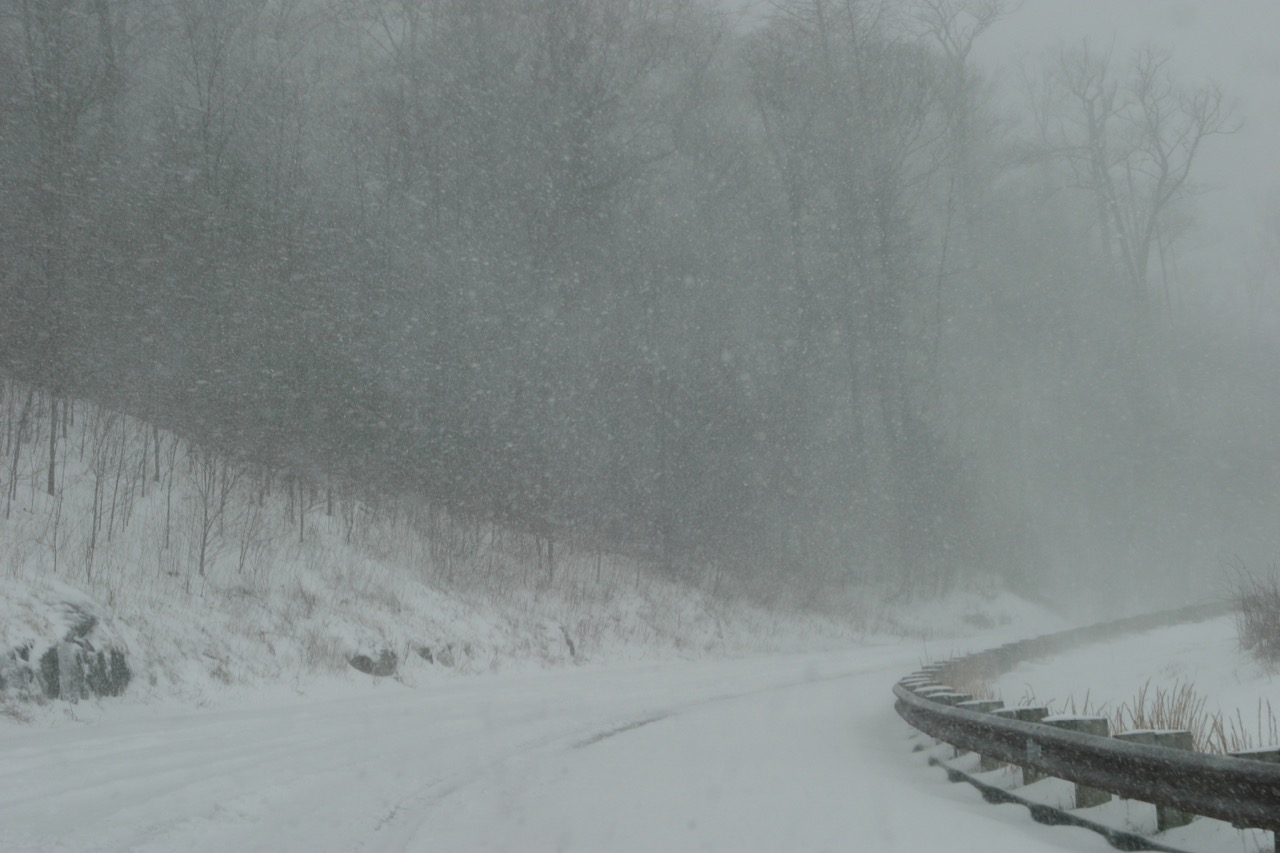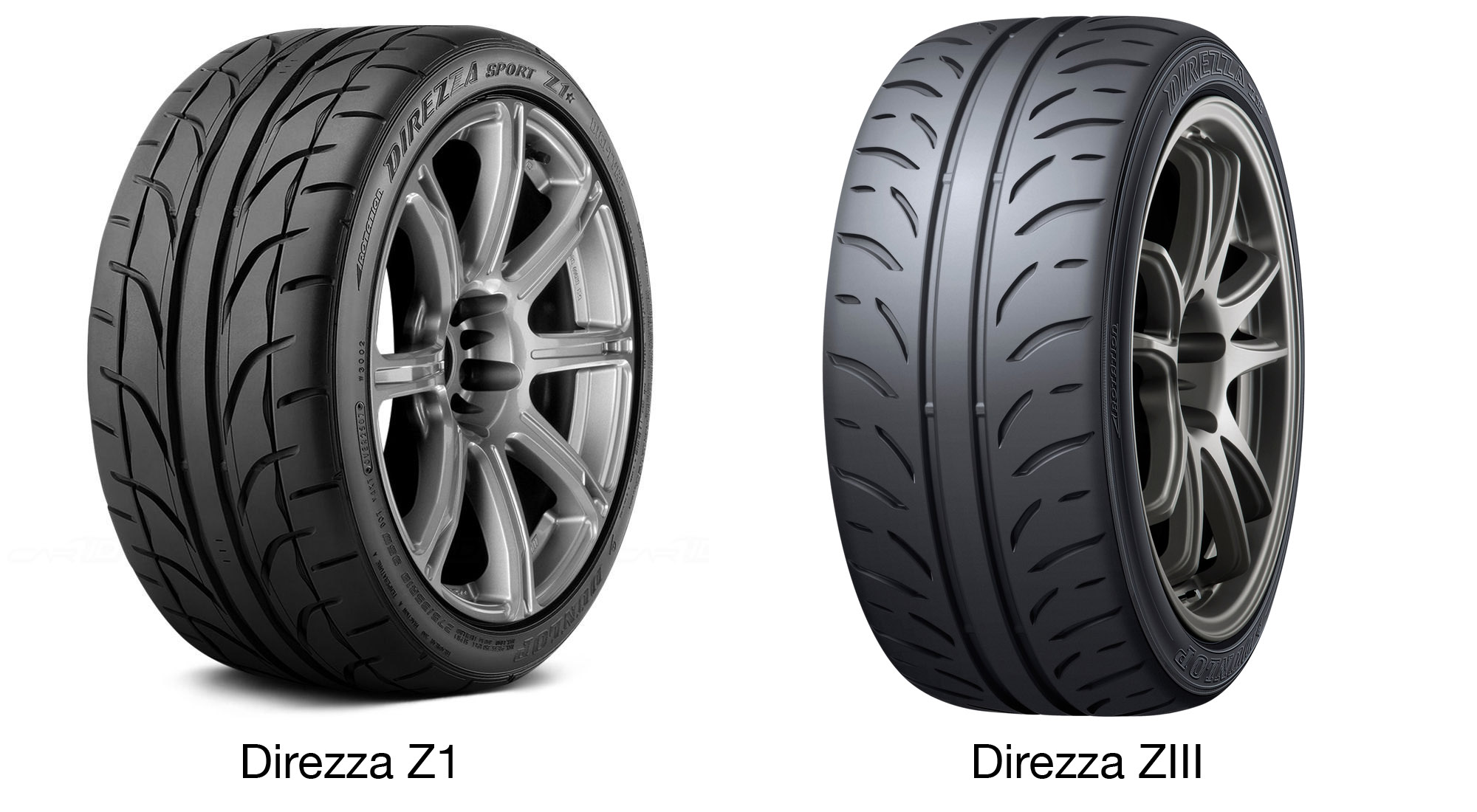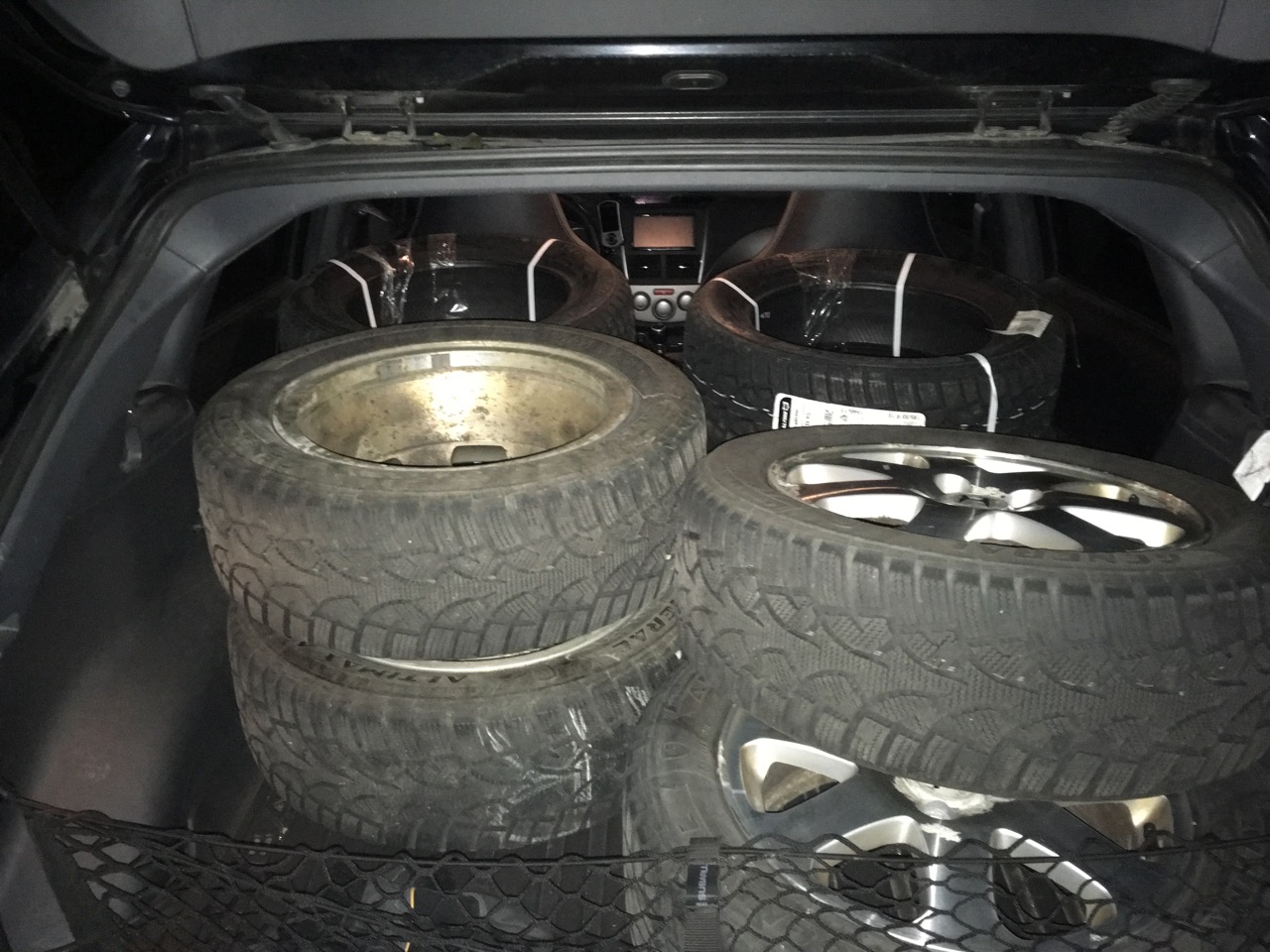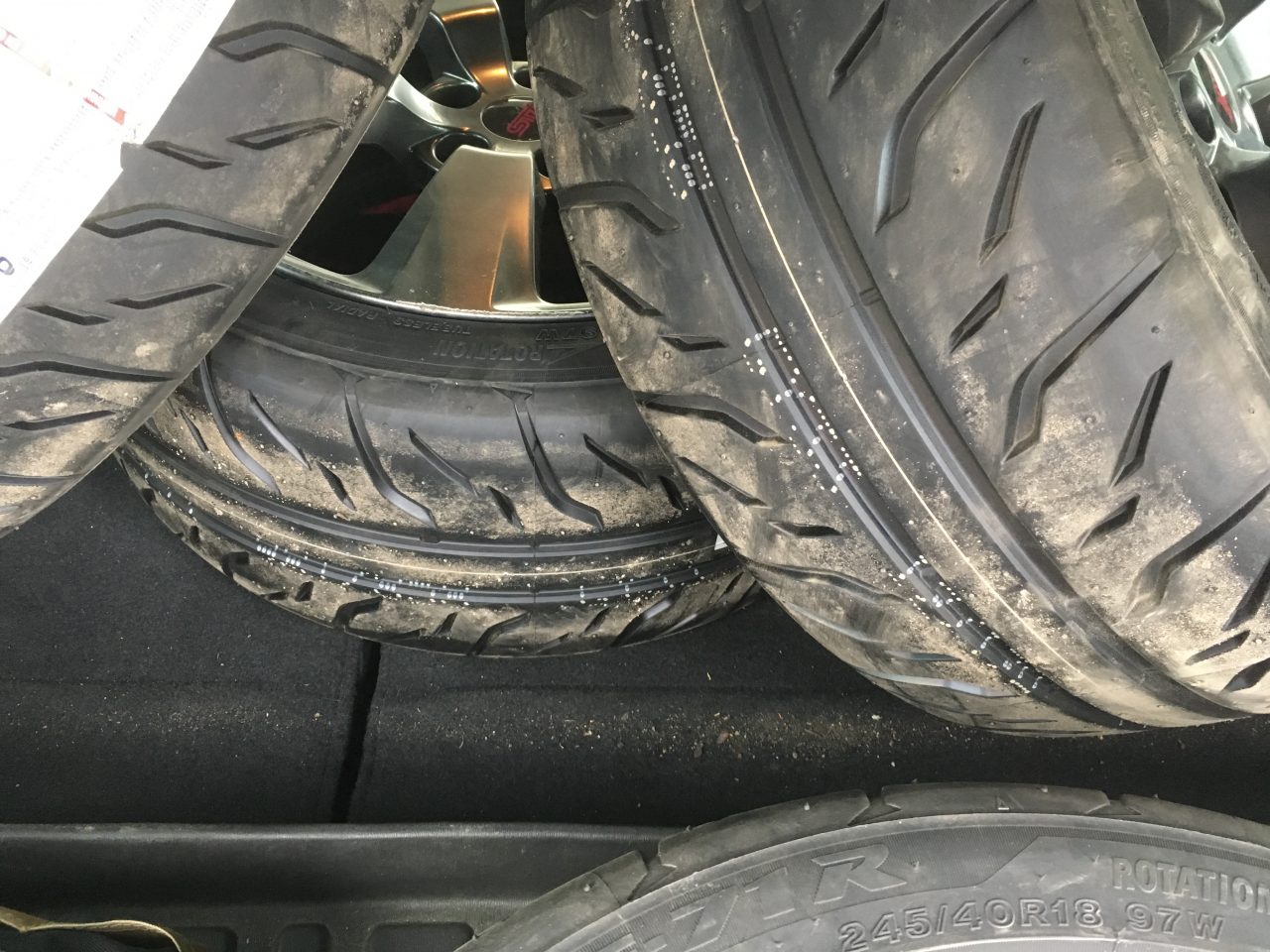My favorite purchase for a car is tires. I’ve written about this often. And I was reminded of this as I read an article on AutoWeek about getting Yokohama tires for a VW Golf GTI. In the article, it mentions the Yokohama Advan A008, the tire (A008P) that Porsche 911s used back in the 1980s. That was the first tire I was excited to get when I got a set for my 944 Turbo.
So I was curious about the tires I had for my old 2008 Subaru STI, which I drove for 204,998 miles. I bought a total of 8 sets of tires (not counting the OEM1 tires), 4 of which were winter tires. They are listed here in the order I got them.
(As a note, I work for Continental and I get discounts for their tires, which I take advantage of often.)
| Tire | Speed Rating | UTQG* | Driven |
|---|---|---|---|
| Dunlop SP Sport 600 (OEM) | 168 mph | 200AA A | 28,298 mi |
| (w)ContiWinterContact TS810 | 131 mph | n/a | 22,417 mi |
| (w)Bridgestone Blizzak WS70 | 118 mph | n/a | 22,676 mi |
| Dunlop Direzza Z1 Star Spec | 168 mph | 200AA A | 28,061 mi |
| Dunlop Direzza ZII | 168 mph | 200AA A | 28,934 mi |
| (w)Pirelli Sottozero 3 | 149 mph | n/a | 30,946 mi |
| ContiExtremeContact DW | 186 mph | 340AA A | 15,570 mi |
| (w)ContiWinterContact SI | 149 mph | n/a | 16,403 mi |
| Bridgestone Potenza RE-71R | 168 mph | 200A A | 11,693 mi |
(w) winter tire
* Uniform Tire Quality Grading from the DOT
As with anything anyone buys, we all have our biases and preferences, the compromises we’re willing to make, and the use cases for the purchase.
I’m not a ride and handling engineer, just a guy with a long commute. I have favorite places on my drive where I can push the car. That’s where I find my limits with the car and tires, and how I decide if I like a tire or not.
Sometimes I rate things from 0-11, and sometimes I rate it as: I hate it / I love it / it’s totally fine. In this article, I’m using the latter.
Dunlop SP Sport 600
These were the tires that came with the car, which means Subaru picked this tire. I mention this because a car manufacturer’s reason for picking a tire doesn’t always match an individual’s. That doesn’t make it right or wrong, just different.
As a summer tire, I can testify the SP Sport 600 doesn’t work well in the snow, as when I got caught in a snow storm in the Tennessee hills.

April on the Cherohala Skyway near the Tail of the Dragon. I could barely drive 25 mph.
This was a grippy tire which I drove for over 28,000 miles to its wear indicators. The biggest issue I had with it was noise. At some point on my second summer with it, I took the car back to the dealer because I thought I was having wheel bearing issues. It turned out to be just tire noise, which was loud even at parking lot speeds.
ContiWinterContact TS810
This winter tire may be the only set of tires I have ever hated. It was the first tire I bought with my Conti discount. It was featured in a Motor Trend article with a black Subaru STI like mine at our Conti winter test facility.
Maybe the article raised my expectations too high. All I can remember about this tire, though, is that I never had enough grip with it. I had no grip on snowy roads, on salt-covered roads, or even on cold, dry roads. Going around snowy roundabouts was always an adventure. There were many times I had to stop in a roundabout to back up a bit to make the turn.
I hated these so much, I replaced them with Blizzaks in the middle of the second winter I had them.
And when I awoke
I was alone, this bird had flown
So I lit a fire
Isn’t it good, Norwegian wood?
Bridgestone Blizzak WS70
As I understand it, there are two types of winter tires: “real” winter tires and performance winter tires. The difference is that “real” winter tires have more grip on snow and ice compared to performance winter tires, but typically have lower handling performance. They also usually have a lower top speed.
If you want to drive on the autobahn with winter tires, however, you would probably want performance winter tires. Both types of winter tires are better in snow and ice than summer or all-season tires.
Bridgestone sells both “real” (WS series) and performance (LM series) winter tires. I had bought the LM series in the past and decided to give the WS series a try. These had much better grip in snow and ice than the Conti TS810.2
The trade off with this tire was a mushy ride. There was quite a bit of sway and roll in curves, but at least I could go through roundabouts without needing to back up.
Dunlop Direzza Z1 Star Spec
In my research to replace the OEM tires, I looked to see what SCCA participants were using. The three brands I picked out were Bridgestone (RE-11), Dunlop (Direzza), and Yokohama (Neova AD08). I chose the Direzza because its performance was close to the performance-leading RE-11 and was cheaper.
As a bonus, it was even cheaper (and quieter) than the SP Sport 600 that came with the car, although that’s not saying much. The street performance of these two Dunlops was probably the same, but in my mind the Direzza was grippier, because reasons. I blame the placebo effect.
He’s as blind as he can be
Just sees what he wants to see
Nowhere man can you see me at all?
I drove the Direzza once for a track event, and it was easily the best tire I’ve used on the track (again, not saying much).3 It was comparable to R-compound tires I used in the 1990s. It was a tire for both the street and the track. I truly loved the Direzza.
Dunlop Direzza ZII
I was excited to find out that the Direzza was being updated when I looked for my next set of summer tires. This new tire were pretty much on par with the original Direzza Z1 when driven on the street.
One positive surprise for me with both generations of Direzzas was their wet-weather performance. They were stable in the wet, even in deeper standing water, like during a strong Michigan thunderstorm. I didn’t expect that based on their tread patterns, but I’m not a tire engineer, just tire-curious.
(YMMV Disclaimer: depending on tire size, vehicle, depth of standing water, phase of the moon, yada yada yada.)

The ZII tread pattern is very similar to the ZIII version
Pirelli Sottozero 3
At some point I started to get tired of the floppy response of the Blizzak (also, I did something stupid), so I decided for a more performance-oriented winter tire. The Pirelli ended up being my most traveled tire, in more ways than one. I drove on it the most (30,946 miles), including trips to Texas and Florida. I also used it while living in Germany. It handled the autobahn without issue.
The Pirelli is a performance winter tire so it didn’t have the ultimate grip of the Blizzak in snow, but it handled much, much better. It was almost on par with the ContiExtremeContact DW in handling, but obviously not in dry grip. I used it for 4 winter seasons, about as much as I ever use winter tires. I thought it was a great driving winter tire. Although it got me through our Snowpocalygeddon, I don’t know if I would recommend it to someone who regularly drove in snowy conditions without a Subaru.
I may also be biased because the first set of winter tires I ever used was the Pirelli Winter P190 Snowsport back in the 1990s. That was a revelation. I’ve been using winter tires ever since.
There are places I’ll remember
All my life, though some have changed
Some forever, not for better
Some have gone and some remain
ContiExtremeContact DW
I bought this to replace the Direzza ZIIs which had worn down to their wear indicators. I picked it because of my discount, and because there was a chance I would bring this car to Germany. I wanted to minimize any issues that would prevent me from getting a TÜV approval. I was hoping they would be okay with a German tire.4
I certainly didn’t expect it to have the grip of the Direzza, but it was fine for spirited driving on German back roads and the autobahn. I didn’t drive these as long as I normally do only because I was itching to get stickier tires once I got back to the United States.
ContiWinterContact SI
After my experience with the TS810, I had been unwilling to get another set of Conti winter tires. But every so often I have to check to see if I still hate something, or if something has changed since then. So I decided to give this Conti winter tire a chance, and it was totally fine. Its performance was closer to the Sottozero 3 than the Blizzak WS70. The low mileage is because I don’t have the Subaru anymore, but I still have these tires. Contact me if you want to buy a totally fine set of winter tires+wheels for a Subaru.
Bridgestone Potenza RE-71R
In most of the head-to-head competition between the Direzza and Potenza tires, the Potenza tends to win, especially in the wet. So I figured it was time to try this tire out. tl;dr—I didn’t like it. At most I give it a solid, “meh.”
Interestingly, the tread pattern from the RE-11 to the RE-71R changed considerably. The RE-71R now resembles the Direzza.

The RE-71R tread pattern almost matches the Direzza ZIII
On the street it felt jittery, where as the Direzza felt very planted. I did try playing with the tire pressure. Reducing it a bit seemed to help, but it was still not as stable as the Direzza on the street.
The worst performance was actually in the wet. While driving on the freeway in the rain, accelerating in the Subaru felt like it was breaking grip from the pavement. I never had that issue with the Direzza. At lower speeds, it was definitely losing grip on wet pavement in a curve, again a problem I never had with the Direzza.
As an engineer, I realize that 1 data point doesn’t tell the whole story, but it certainly affects my opinion. It’s possible that on the track the RE-71R is the better tire, but for the street I think the Direzza was significantly better on my Subaru.
It may be worth noting that the UTQG rating for this tire is 200A, while the Direzza was 200AA. The AA/A designation is for traction in the wet, and the Direzza got the higher AA rating. So maybe ratings matter?
A final note: I thought the “R” in RE-71R was a reference to R-compound tires, but it’s for “revival” because Bridgestone brought the name back from the 1980s. The original RE-71 was used on cars such as the Porsche 959. Now I’m wondering if the -71 was a reference to the SR-71 spy plane.
More Rubber for the Soul
Sometimes I think I want more cars just so I would have something to put tires on. For my other cars, I tend to buy company tires (Continental and General),5 but I try out other tires when I get the chance. The Michelin X-Ice was a fine winter tire for my wife’s old Subaru Legacy, and the (OEM) Falken Sincera SN250 A/S isn’t a horrible all-season tire for her Golf Alltrack.
One mistake I made a few years ago was buying old tires. Technically the tires were new, but one pair was manufactured 5 years prior, and the other pair 7 years prior. I had even asked about the manufactured date when I ordered them, but the sales person had no idea. I had been looking for months before I even found tires that fit for my Porsche 944 Turbo.
These were staggered Continental SportContacts, 225/50ZR16 in the front, and 245/45ZR16 in the back. They were hard tires with no grip even though the rear tires had a ridiculous 160A A UTQG rating. I’m assuming they just dried out.
I drove them 6,853 miles before replacing them with Toyo Proxes T1R. It took me that long to replace them because it was hard to find matching tires for the front and rear. When I searched Tire Rack today, for example, there were no matching front/rear tire combination for the 944.
When I had the 944 in Germany, it rode on Yokohama AVS S4 tires. This was a Z-rated6 M+S (mud+snow) tire. I never tried it in mud, but it was terrible in snow and squirmy above 150 mph, my two important use cases for this tire. I guess tire engineers weren’t using black magic back then.
It’s been a long time, now I’m coming back home
I’ve been away now, oh, how I’ve been alone
My current “daily” driver is a 2019 VW Golf R which came with Continental SportContact 5P. I originally thought it came with SportContact 6, because that’s what the magazines wrote. Maybe that’s true in Germany, but not here.
Update: Nope, I was totally wrong. It’s the Honda Civic Type R that comes with the SportContact 6. I was cross-shopping a lot back then, and obviously got confused.
Tire Rack calls the 5P a “Maximum Performance” summer tire, not “Extreme Performance” like the Direzza or RE-71R, but it’s actually not bad. It’s hard to compare UTQG ratings between manufacturers, but I was surprised with its 240AA A UTQG rating.7
I’ve read a few negative reviews on this tire on the Golf R, and I’m not of the same opinion. Again, everyone has their own priorities. I can push the Golf R as hard as I did the STI with its Direzzas, and in places, I can go slightly faster in the Golf R. Maybe it’s the car, but I drove the STI for 11 years and the Golf R for 1.
I’ll probably stick with Contis for now since I’m not looking for a track tire. I might eventually give the Potenza RE-71R another chance, or maybe try the Goodyear Eagle F1 Supercar 3, because how can I not with that name. I often say I’d like to try more Michelin tires until I see their prices. My hope is that one day Dunlop will make a Direzza ZIV for the Golf R.
I also bought Continental VikingContact 7 winter tires for the Golf R, a tire previously only sold in Europe. With this tire, I felt that the Golf R was more stable in the snow than the STI with the Blizzak. Memories tend to be unreliable, but that’s how I currently feel about it.
As much as I liked the Sottozero 3, I think this is now my favorite all-around winter tire. The only downside so far is a top speed of only 118 mph.
Now, if only there was a reason for me to drive my cars anywhere.


Cargo volume should be measured by how many wheels and tires can fit.
ABOVE: Four Honda wheels, 4 Honda tires in a Subaru STI
BELOW: Four 18-inch rims + Continental VikingContact 7 tires in a VW Golf R
Asked a girl what she wanted to be
She said baby, can’t you see
I wanna be famous, a star on the screen
But you can do something in between
Crankiness Rating: ![]()
![]()
![]()
![]()
![]()
![]()
![]()
![]()
![]()
![]()
![]()
I have 5 sets of wheels and tires in my basement right now, which is weird because I only have 4 cars.
